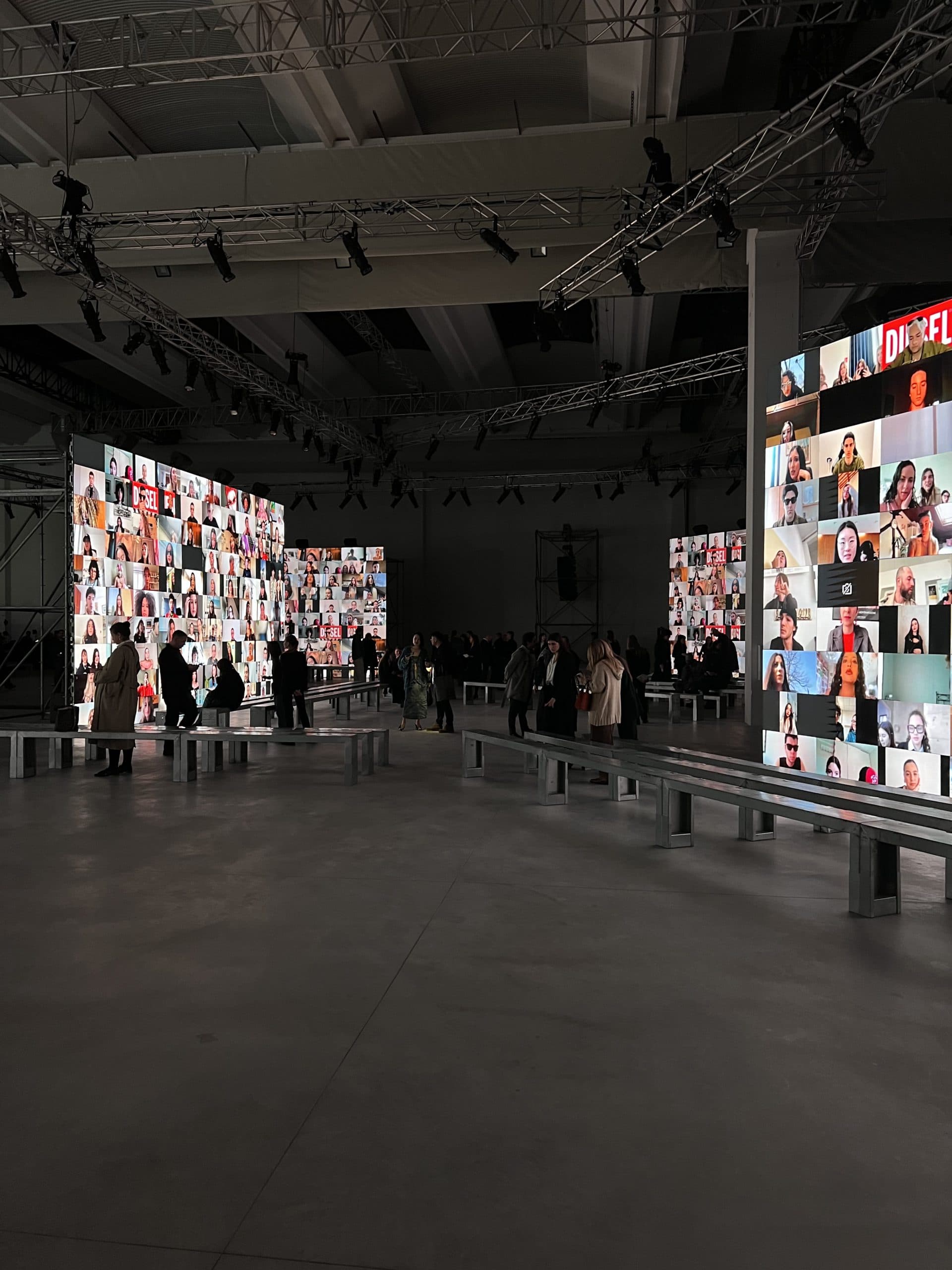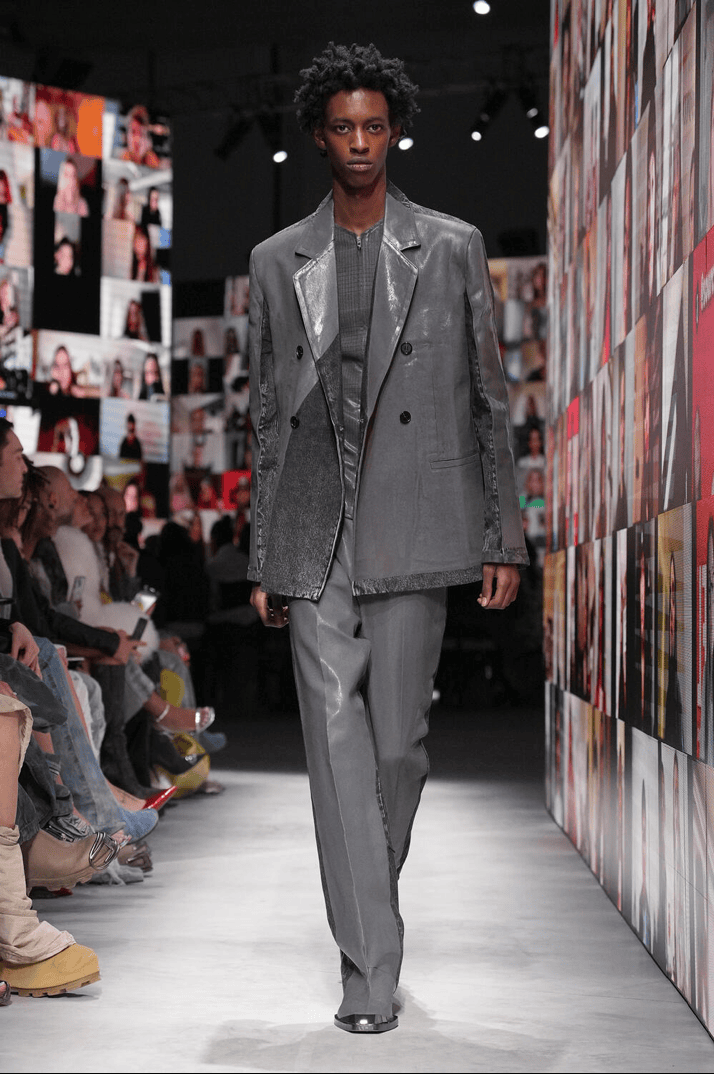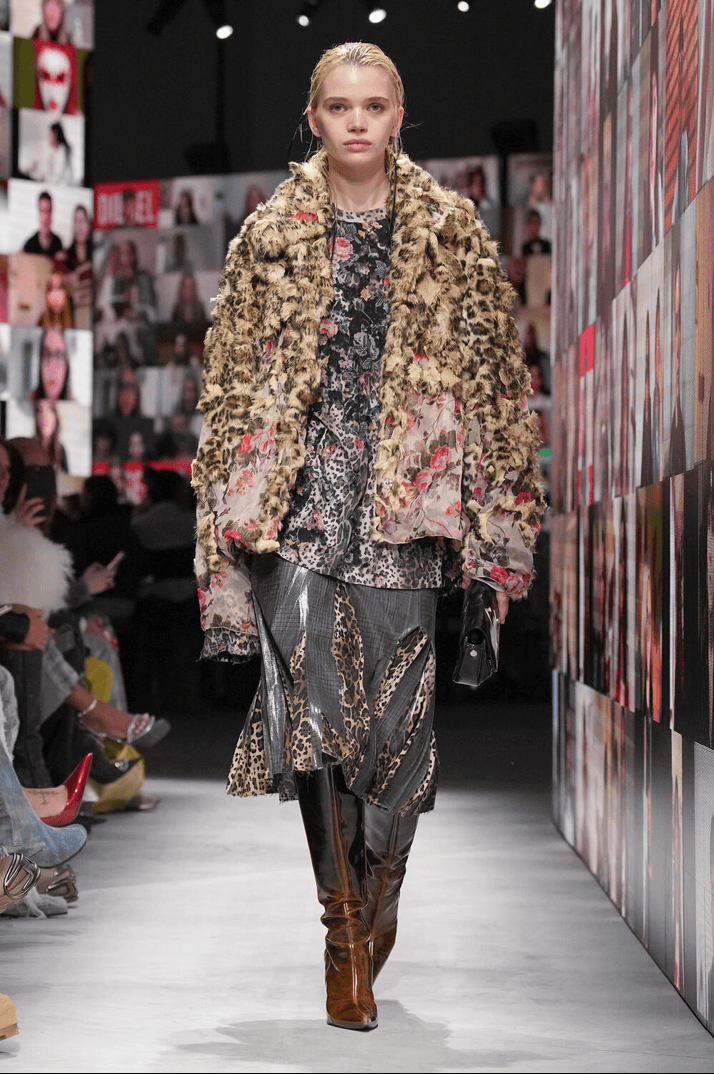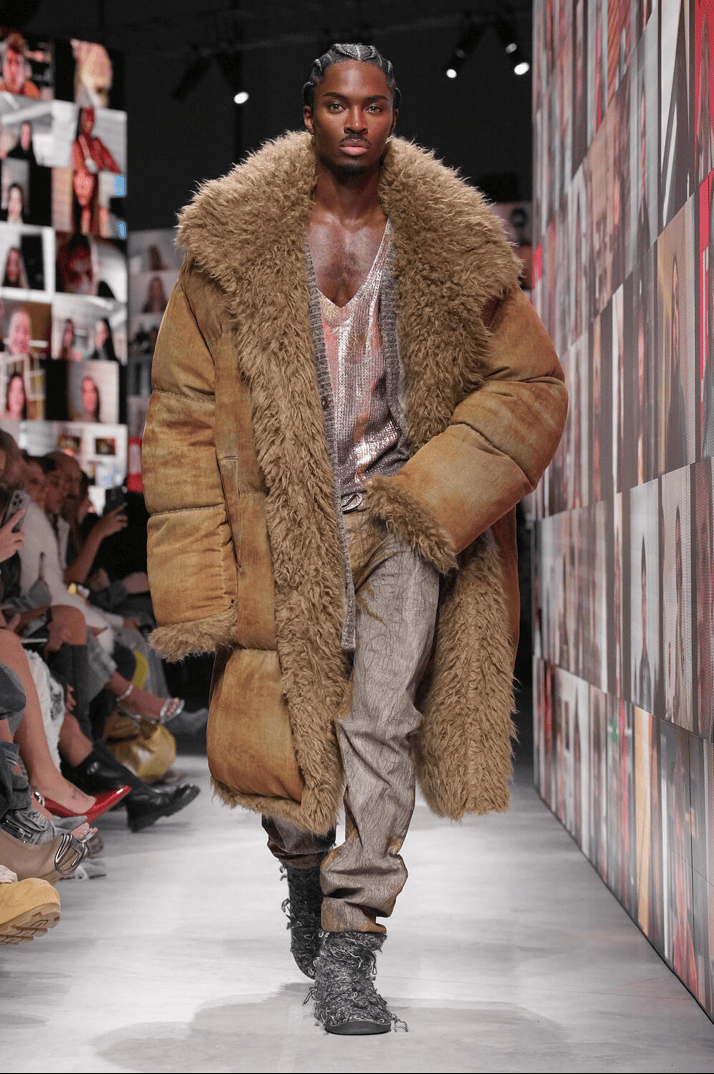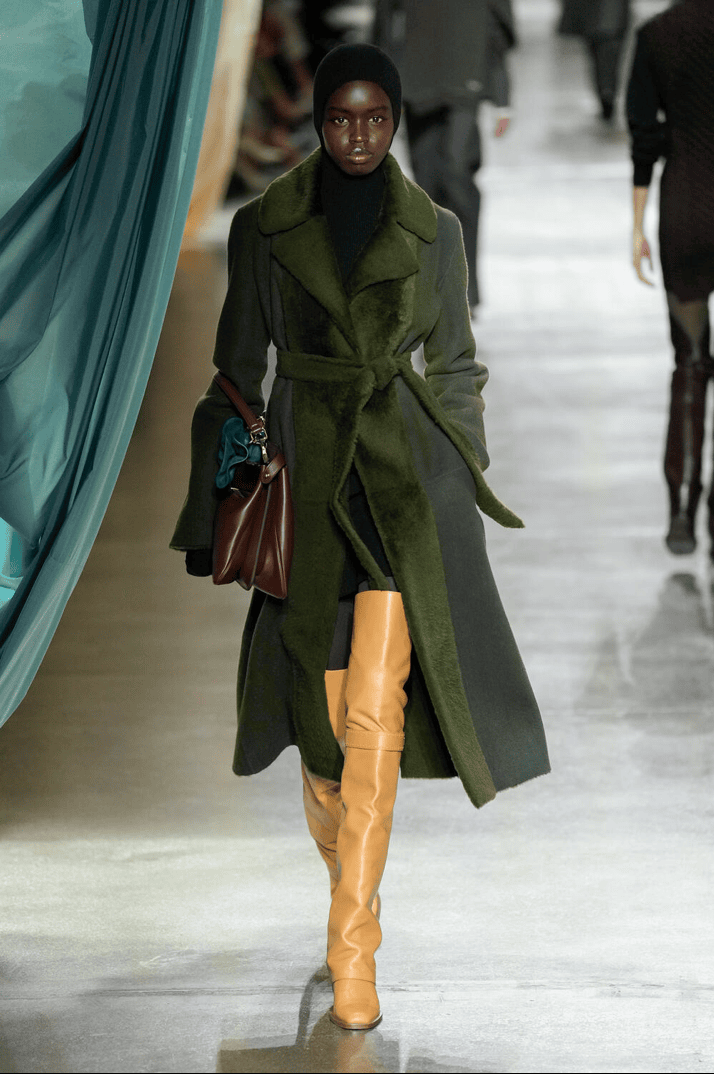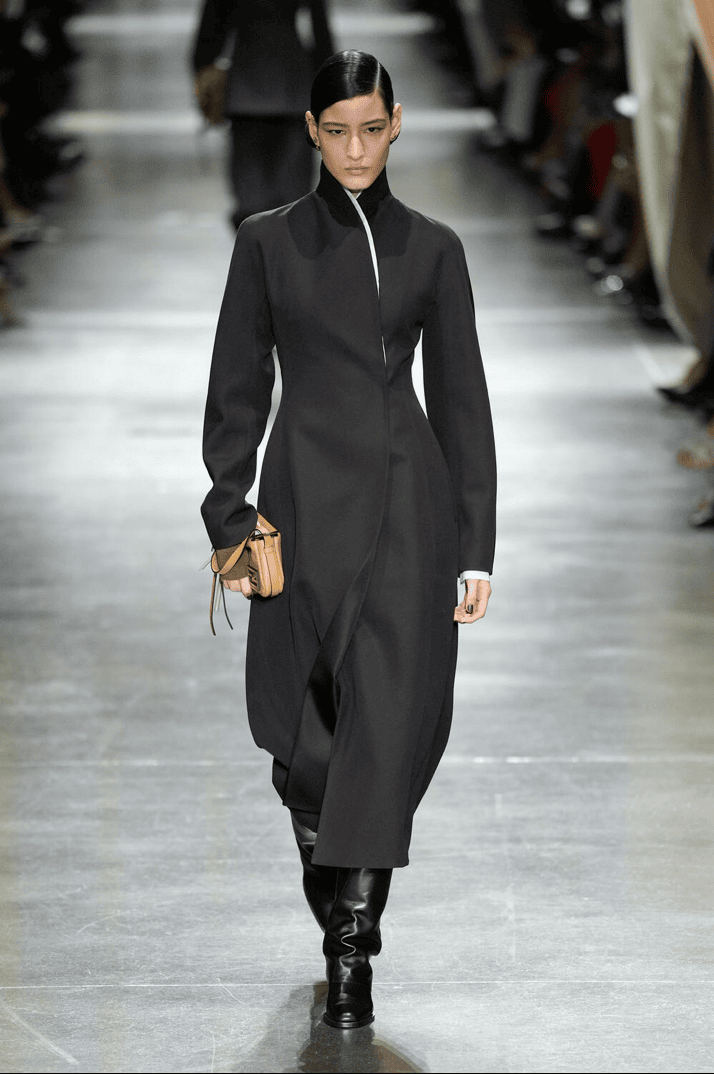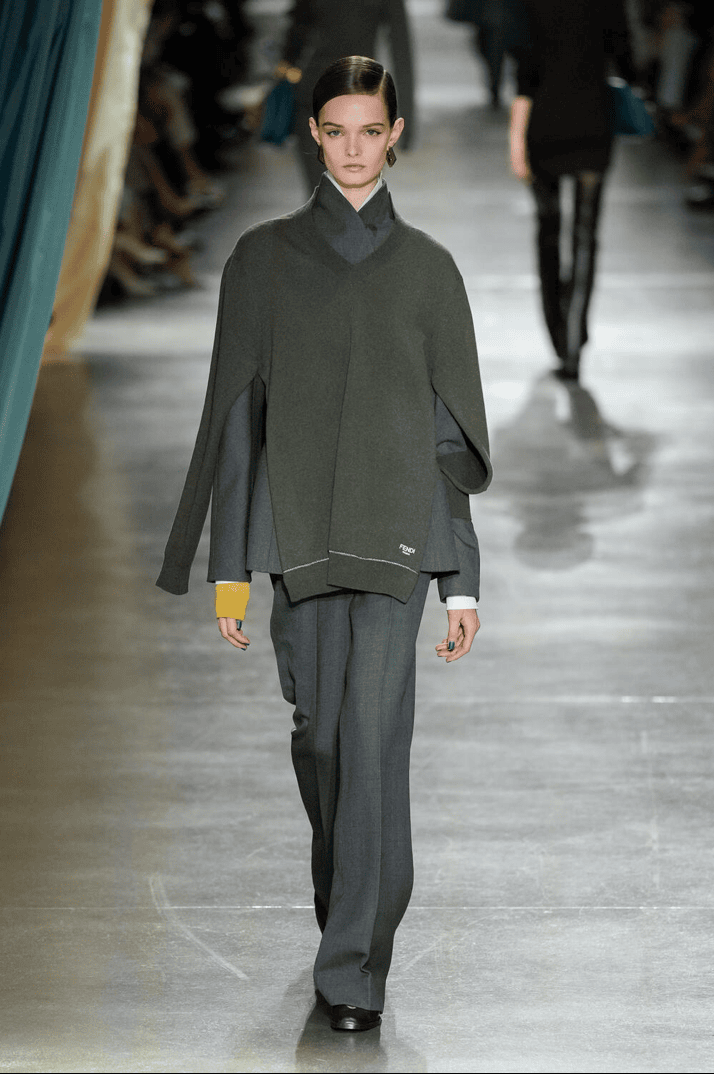To unveil the Diesel Fall/Winter 2024, designer Glenn Martens, who in his history at the brand has shown himself an ace for the performative and the surprise factor, put together a runway show that–even against his own principles, bore it all out.
In an empty warehouse on the outskirts of Milan, towering screens stood tall, projecting a mosaic of micro Zoom-screen rectangles of live participants streaming the show live from their homes. Days before the event, live-stream cameras were set up across Diesel HQ and the show’s venue, giving fans not a glimpse, but a full view, of the dynamic unfolding at styling sessions, castings, and the show’s location. With surprises spoiled and the filters removed, Diesel laid bare everything in advance.
“I need one more security in this section over here, I need a little backup,” cried the voice of a Diesel crew member through the speakers at the venue. The sound that inundated the room, a dispersed chatter similar to a pocket dial, was an orchestrated live audio experience provided by microphones attached to the production crew. An unfiltered delivery of real-time conversations happening backstage.
An omnipresent voice in the venue called a countdown, and models walked down the runway to only the call of an omnipresent voice calling their exit order. Thus came the initial three looks, showing what now has become a new hallmark of the brand–a fabric manipulation transitioning from rib-knits to translucent mesh fabrics in a diluting ombre effect, also shown in previous collections.
A crescendo of music mixed blended with the authoritative voice, setting the tempo for the models and evolving into a fully realized electronic soundtrack. On the Zoom screens, dogs, breasts, and aliens. On the runway, waxed denim tailored suits and vest jackets; a game of show and conceal. Glenn Martens resorted to variations of Diesel’s staple element, the distressed denim while exploring new dimensions of the material by incorporating laminated treatments to fixate pleats or shaping sharp sleeves. Martens also played with a diverse range of faux fur interpretations, integrating them into everything from shearling coats to sporadic hair applications on graphic t-shirts and mini skirts.
Designers in many realms operate at various levels of transparency in presenting not only their aesthetic vision but also their private personas to the public eye. In fashion, the barometer starts at those like the enigmatic Martin Margiela, or Cristobal Balenciaga, who opt for a mysterious hermeticism, rarely revealing their creative essence and processes, let alone their private lives.
Glenn Martens’ unrestrained curiosity at Diesel, best exemplified through his continuous experimentation with materials and the audacious silhouettes they give rise to, might at times be misconstrued as being unfiltered; yet what Martens possesses is an unparalleled authenticity to his persona and his work.
Martens employs filters and a curation process that achieves the decantation of chaos into harmony. Backstage, he tells a journalist about his favorite type of fabric, jumping straight after to declaring himself a french fries aficionado. The unpretentious complexity of both his work and his persona is perhaps what has taken Diesel to cross-generational wardrobes, reaching customers with the simple act of reality, of truth, more than storytelling.
Leave it to Kim Jones to give any reference to a sartorial metamorphosis. For Fendi’s Fall Winter 2024 collection, the designer tapped into specific cultural epochs that marked the house’s archive, like the 80s in the UK and the different social movements that defined the era. In all the soberness of the precisely cut, yet slightly voluminous tailoring that opened the show, one sees Jones’ intention to treat even the smartest silhouettes with irony. Waistlines are deftly cinched and hips assume a pronounced breadth in jackets, gently flirting with a peplum effect, while in knitwear ensembles, waits were delineated by the intervention of Fendi-yellow knitted sashes.
Jones played with the balance between the bourgeois and the carefree, balancing out the strictness of his shirting and suiting with undone and exposed bodysuits. The collection managed a playful juxtaposition, with nodes to the avant-garde spirit of Leigh Bowery reflected in polka-dot embroideries, while simultaneously invoking the timeless Roman essence of Fendi through pieces adorned with classical statuary prints.
Jones’ quest to define his silhouette at Fendi has been gradually materializing since his Spring presentation, and the Fall collection serves as a tangible manifestation of the cohesiveness he has shown capable of at previous endeavors. Call it the slender, subtly sculptured silhouette, for the moment. On this occasion, it manifested delicately in glorious knits, especially those off-one-shoulder pieces with a lighter gauge.
In his co-ed Fall 2024 collection for Etro, Marco de Vincenzo veered towards the understated amidst the typically exuberant, embracing a quieter and more subdued take on the brand’s heritage. The dimly lit show space was brought to life by towering Greek sculptures, their grandeur casting a luminous glow. Perhaps echoing the sentiment of unleashing a liberated facet of creativity even within sobriety.
De Vincenzo translated this vision into fluid, draped silhouettes featured in dresses printed with Etro’s quintessential motifs. To tap into Etro’s silhouette archive, the collection embraced loose and effortlessly breezy treatments, a departure from the conventional expectations associated with a Fall collection. The house’s rich textile heritage encountered contemporary, youthful silhouettes that teasingly revealed erogenous areas through strategic styling. Chest and shoulders were exposed with off-shoulder knit tops, while a subtle glimpse of knees emerged between the gap of skirts that hovered just above the knee paired with high knitted socks.
In the men’s looks, attention was rested on sumptuous hoodies crafted from rich brocades, accompanied by woven leather shoulder bags, printed shearling coats, and pointed cowboy boots–an ode to mountainous extravagance. De Vincenzo approached suiting with rather audacity, delivering knitted pieces in mostly black and white–a novelty within the house.
